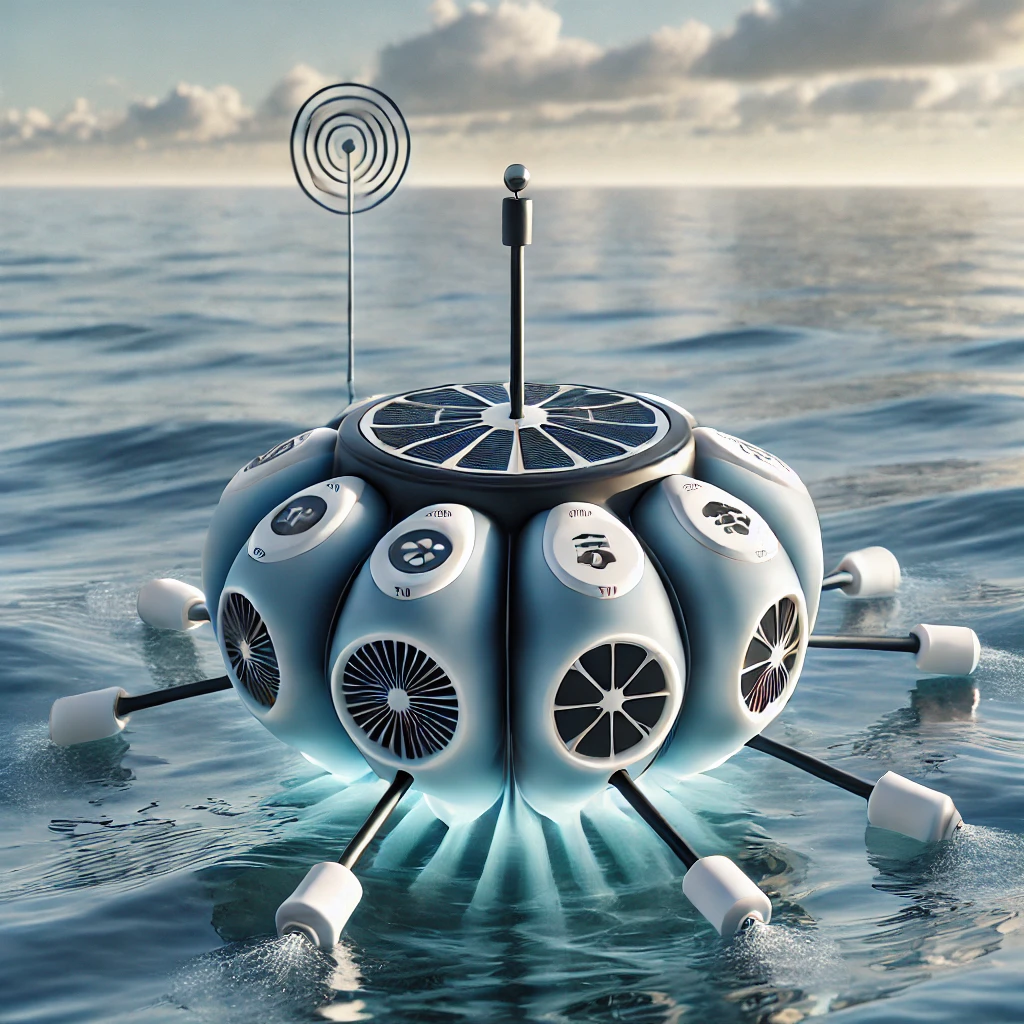Smart Marine Technology: Self-Recovering Nanogenerators for Wave Energy Harvesting

Researchers from Guangxi University and the Chinese Academy of Sciences have made significant strides in developing an Elastic Self-Recovering Hybrid Nanogenerator (ES-HNG) designed to harness energy from water waves and monitor marine environments. The ES-HNG integrates a triboelectric nanogenerator (TENG) with an electromagnetic generator (EMG) to optimize space efficiency and enhance energy capture. This hybrid device is constructed using three-dimensional (3D) printing technology, where a thermoplastic polyurethane (TPU) elastic skeleton supports multiple frictional layer power generation modules. The inclusion of both TENG and EMG components within the same structure leverages the strengths of each technology to improve overall performance.
Innovative Energy Harvesting for Marine Monitoring
The TENG component operates on the principles of triboelectrification and electrostatic induction, which enable it to capture low-frequency wave energy efficiently. The innovative design ensures optimal contact and separation of friction layers, crucial for generating electrical output. Various factors, such as the weight of the magnet and the angle of the elastic skeleton, significantly influence the performance of the TENG. Adjusting these parameters allowed the researchers to identify an optimal configuration that maximizes energy output. The TENG demonstrated a peak power output of 42.68 milliwatts (mW), while the EMG achieved 4.40 mW.
Real-World Applications and Sustainable Energy Solutions
Experimental results showcased the ES-HNG's ability to power multiple marine sensors, including a self-powered wireless meteorological monitoring system, a wireless alarm system, and a water quality monitoring pen. These applications highlight the ES-HNG's potential to provide a sustainable and reliable energy source for real-time marine environmental monitoring. This capability addresses the limitations of current battery-dependent systems, which pose environmental pollution risks and require significant maintenance.
Dual-Mode Energy Harvesting Maximizes Efficiency
The integration of the TENG and EMG within the ES-HNG allows for enhanced energy harvesting from water waves. The TENG component captures mechanical energy from the motion of water waves, converting it into electrical energy through the interaction of friction layers. The EMG component generates electricity via changes in magnetic flux induced by the movement of the magnet within a coil. This dual-mode energy harvesting approach ensures maximum space utilization and improves the efficiency of energy capture.
Rigorous Testing and Practical Demonstrations
The ES-HNG has been subjected to rigorous testing to evaluate its performance under various conditions. In practical tests, the device was able to charge a 1 millifarad (mF) capacitor much faster when combined with a power management circuit (PMC). Without the PMC, the TENG charged the capacitor to 0.63 volts in 180 seconds. However, with the PMC, the charging efficiency increased significantly, reaching 3.44 volts within the same time frame, representing a 5.46-fold improvement. This result underscores the importance of the PMC in enhancing the ES-HNG's charging efficiency.
Furthermore, the ES-HNG demonstrated exceptional durability and performance stability under different water wave conditions. When tested in a wave-making pool, the device's output increased with the frequency and height of the water waves. For instance, as the water wave frequency increased from 0.8 Hz to 1.1 Hz, the transferred charge, short-circuit current, and open-circuit voltage of the TENG showed a corresponding upward trend. Similarly, increasing the wave height from 5 cm to 8 cm led to enhanced output performance. Under optimal wave conditions, the TENG achieved a peak power output of 7.44 mW, while the EMG reached 0.10 mW.
The practical applications of the ES-HNG were demonstrated through several use cases. In one scenario, the device powered a self-powered wireless meteorological monitoring system. After approximately 300 seconds of charging, the accumulated voltage in the capacitor reached 4.70 volts, enabling the temperature/humidity sensor to operate and transmit meteorological data remotely. In another scenario, the ES-HNG powered a self-powered wireless alarm system. After charging a 1 mF capacitor for 150 seconds, the system was able to send a signal to trigger a remote alarm. Additionally, the ES-HNG was used to power a water quality monitoring pen, demonstrating its versatility in various marine applications.
The research provides a practical solution for marine wave energy harvesting and represents a promising distributed power generation technology for future marine self-powered environmental monitoring and forecasting systems. The ES-HNG's innovative design and robust performance offer a sustainable alternative to traditional battery-dependent systems, addressing both environmental and operational challenges. By combining the advantages of TENG and EMG technologies, the ES-HNG maximizes energy capture efficiency and space utilization, paving the way for large-scale deployment in the marine internet of things (IoT). This advancement marks a significant step towards sustainable and efficient marine environmental monitoring, with the potential to revolutionize the way we harness and utilize oceanic energy resources.
- READ MORE ON:
- Elastic Self-Recovering Hybrid Nanogenerator (ES-HNG)
- Self-Recovering Nanogenerators
- triboelectric nanogenerator (TENG)
- electromagnetic generator (EMG)
- thermoplastic polyurethane (TPU)
- TENG
- ES-HNG
- marine internet of things (IoT)
- Water wave energy harvesting
- Smart marine technology
- Wave Energy
- FIRST PUBLISHED IN:
- Devdiscourse










